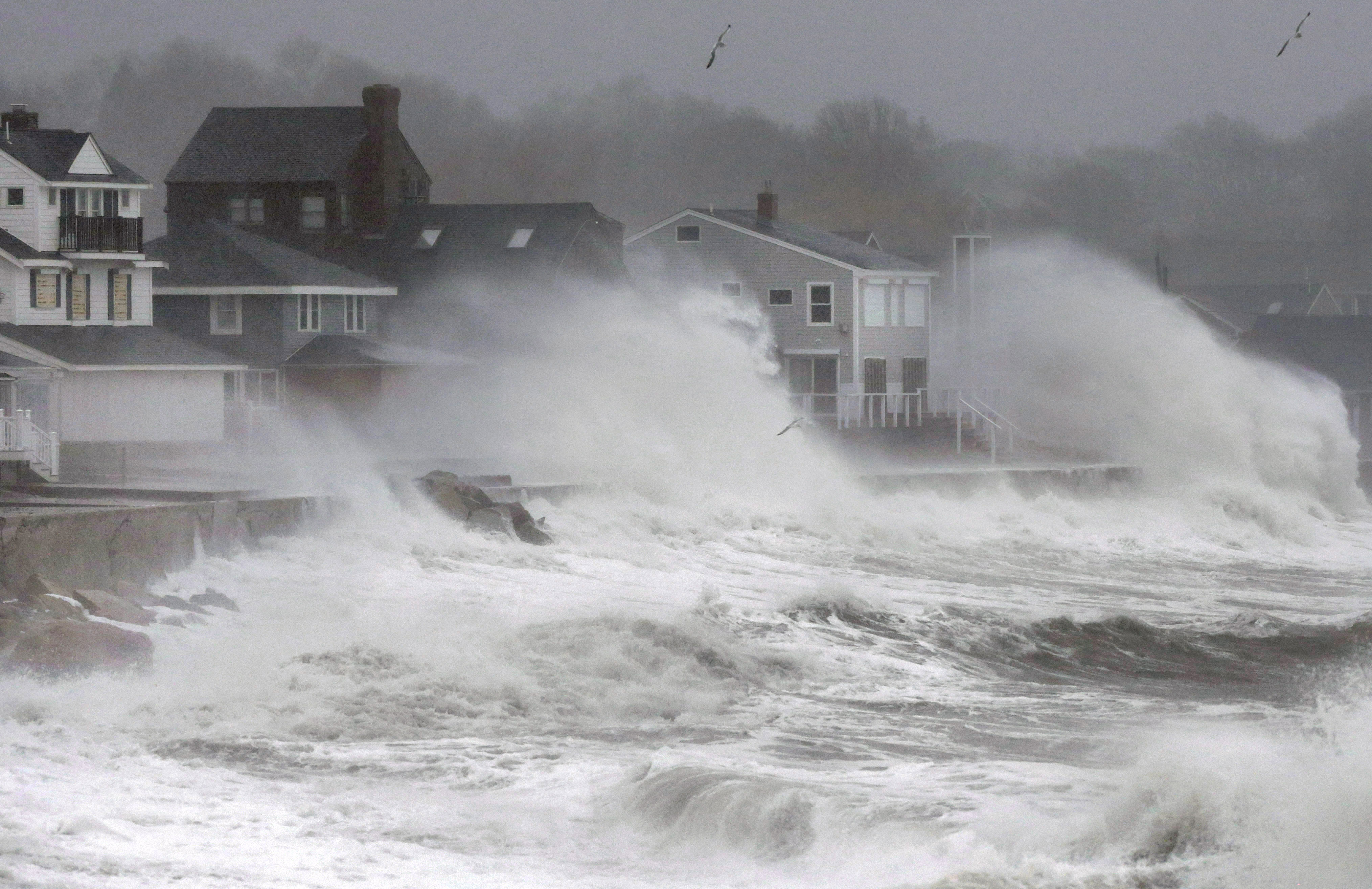
The New England Center for Investigative Reporting has a perfect example of why we’ll be seeing more stories from sad homeowners in the face of rising seas and stronger storms — a government policy that helps them make the same poor decision disaster after disaster.
In Scituate, Mass., on Boston’s South Shore, the owner of 48 Oceanside Drive — she lives in Florida — has gotten another federal government bailout from the federal flood insurance program.
The house, which has been renovated over the years from a cottage to a million-dollar property, has been hammered by ocean storms time and time again, and the most reasonable response would be not to keep rebuilding.
But the owner has just received $180,000 from the government program to raise the house higher. And it’s not the first time she’s gotten government help.
The house, which sold for more than $1 million in 2007, was last hit during the Jan. 26 blizzard. Once a small cottage, the house was renovated and expanded by various owners after flood and insurance payouts. It is now a 4-bedroom, 3.5-bathroom house. The structure was first raised about 3 feet with a $40,000 federal grant about a dozen years ago. This time, it will go 5 feet higher.
The house is situated on the frontline of New England’s losing battle with the sea. Scituate hosts some 150 houses that, like 48 Oceanside Drive, are hit so often they are designated “severe, repetitive loss properties” by the Federal Emergency Management Agency, which administers the national flood-insurance program. Most of these homes in the town of 18,000 have received at least four payments from the federal flood-insurance program.
Though always subsidized, the federal flood-insurance program was once self-sustaining, operating with enough paying homeowners to cover losses. But it has been in the red ever since a series of punishing storms began with Hurricane Katrina in 2005. The program is now more than $20 billion in debt and relies on the federal government to stay afloat.
You can blame Congress. It tried to end the premium subsidies in 2012, but caved in to criticism that it would lead to higher premiums for properties that aren’t hit by the repeated storms.
It’s not a new situation and it’s not just a coastal situation.
After the great flood of 1993 in the Midwest, the White House commissioned an investigation into floodplain development and the effect of subsidizing the development.
The Galloway Report suggested changes to flood insurance, crop insurance and federal damage assistance programs, to reduce incentives that promote building in areas that taxpayers might have to bail out, according to the St. Louis Post Dispatch editorial.
It didn’t happen. In fact, Congress subsequently passed a farm bill that made the increased incentives to build in flood zones.
The developers, of course, will laugh all the way to the bank. In 1993, many landowners in Gumbo Flats waited until just 5 days before the flooding hit to buy insurance. They were covered.
Now they’ve rebuilt on the taxpayers’ dime, and the changes proposed to flood insurance policies by the Galloway Report have been ignored. The valley will flood again. And all of us will pay.
The levee protecting their investments is bigger and badder, but it’s not as mighty as the Missouri. Even if the levee holds, it will merely push a wall of water elsewhere. Let it be somebody else’s problem.
Here’s what we’ve learned 20 years after the Great Flood of ‘93: Not one damned thing.
Archive: Who roots for the sea? (NewsCut)
